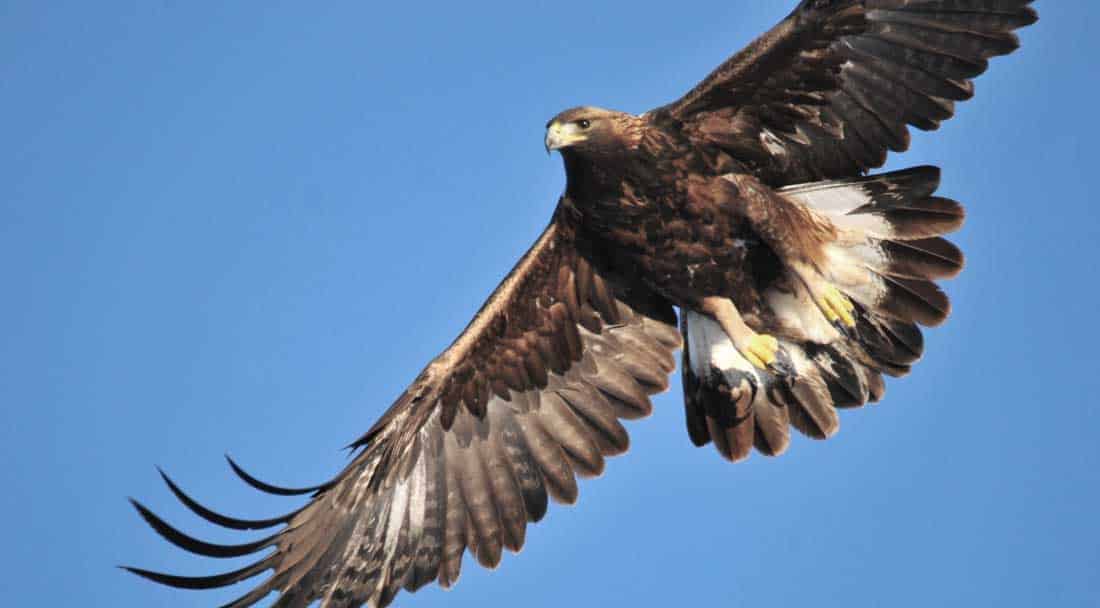Wildlife
Some of Colorado’s most awe-inspiring natural attractions can be found right here at the C Lazy U Ranch.
Black Bear

The American black bear is the smallest of the three bears species found in North America. Black bears have short, non-retractable claws that give them an excellent tree-climbing ability. You might happen across a black bear on Yellow Brick Trail, the Logging Road, or Baldy. If you happen to encounter a bear, make yourself as large as possible by holding your hands above your head, make lots of noise, and back away slowly.
Mountain Lion

Mountain lions like to prey on deer, though they also eat smaller animals such as coyotes, porcupines, and raccoons. They usually hunt at night or during dawn and dusk. These cats employ a blend of stealth and power, stalking their prey until an opportunity arrives to pounce, then going for the back of the neck with a fatal bite. We don’t see too many mountain lions on the ranch, but those that were seen were spotted along Yellow Brick Trail.
Moose

As the largest members of the deer family, moose are easily spotted. During the summer months you might see them on the Blue Dot Trail, Aspen Trail, Moose Paddle, Reservoir Trail or even grazing on the grass in front of the Lodge. Male moose have spectacular palmate antlers that shed each year, and some can even span six feet from point to point! If you happen to encounter a moose, never approach it. Instead, back away quickly and if a moose happens to charge, duck behind a tree or structure for cover.
Elk

Elk are also called Wapiti, a Native American word that means “light-colored deer.” In early summer, elk migrate to high mountain grazing grounds where the cows (females) will give birth. On the ranch, you might see elk near Garden of the Gods or Wilson Pasture.
Mule Deer

Named for their large mule-like ears, mule deer have called western Colorado home for decades. Herds in a portion of northwestern Colorado were so prolific that the area was dubbed “the mule-deer factory.” Deer migrate between the summer habitats in Arapahoe National Forest just west of the Continental Divide. In the fall, during the rut (mating season) they head west passing through the ranch and heading toward Kremmling. Adults typically weigh between 130-280 pounds. You can see them at the Duck Pond, Garden of the Gods, and on Mount Baldy.
Pronghorns

Related to goats and antelopes, both males and females have horns on the tops of their heads and have reddish-brown fur. While the female’s horns are just bumps, male horns can be ten to fifteen inches long and have a unique shape. They point backwards with a small notch or prong at the top that points forward—hence, the name! They are often found on the mesa or on Curtis Ridge.
Bald Eagle

An adult bald eagle is mainly brown with a white head and tail. The males and females are identical in plumage, but females are about 25 percent larger than males. The bald eagle is the national bird of the United States. Look for bald eagles flying over Garden of the Gods or in their nests on the Reservoir Trail.
Golden Eagle

This powerful eagle is North America’s largest bird of prey and the national bird of Mexico. They are dark brown, with lighter golden-brown plumage on their heads and necks, and can dive upon their quarry at speeds of more than 150 miles per hour. They are often seen flying over the mesa near Garden of the Gods.
Magpie

The Eurasian Magpie is a striking black and white bird with a long tail. The head, neck and breast are glossy black with a metallic green and violet sheen; the belly and scapulars (shoulder feathers) are pure white; the wings are black glossed with green or purple. The magpie is believed to be among the more intelligent of all animals and is a scavenger by nature.
Bee Hive Tours

“Get inside the hive” and learn about our bee yard. The tour is 1.5 hours long and teaches about the honeybee life cycle, hive structure, beekeeping tools and bee yard safety protocol. We’ll suit everyone up and open up a hive to explore. The tour is great for anyone 6 years old and up and 6 people total can participate. Inquire at the Outfitter’s Cabin.